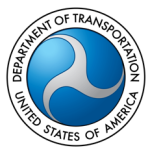- 産業: Government
- Number of terms: 13754
- Number of blossaries: 0
- Company Profile:
An ocean-going ship specially constructed to carry LNG in tanks at 160 C. Current average carrying capacity of LNGs is 125,000 cubic metres. Many LNGCs presently under construction or on order are in the 210,000 – 215,000 cubic metre range.
Industry:Transportation
Allows equipment and supplies arriving at one port to be loaded on a vessel, aircraft, etc., for its exclusive use and to be exported from the same port.
Industry:Transportation
Any ship which is used primarily in commerce (1) For transporting persons or goods to or from any harbor(s) or port(s) orbetween places within a harbor area;(2) In connection with the construction, change in construction, servicing, maintenance, repair, loading, unloading, movement, piloting, or salvaging of any other ship or vessel.
Industry:Transportation
The waterline corresponding to the maximum draft to which a vessel is permitted to load, either by freeboard regulations, the conditions of classification, or the conditions of service.See also Plimsoll Mark.
Industry:Transportation
The international carrier is obligated to make declarations of the ship’s crew and contents at both the port of departure and arrival. The vessel manifest lists various details about each shipment by B/L number. Obviously, the B/L serves as the core source from which the manifest is created.
Industry:Transportation
Article shipped. For dangerous and hazardous cargo, the correct commodity identification is critical.
Industry:Transportation
Cargo delivered to/from the carrier where origin/destination of the cargo is in the local area.
Industry:Transportation
A tanker of 200,000 to 319,000dwt. It can carry about 2 million barrels of crude oil.
Industry:Transportation
